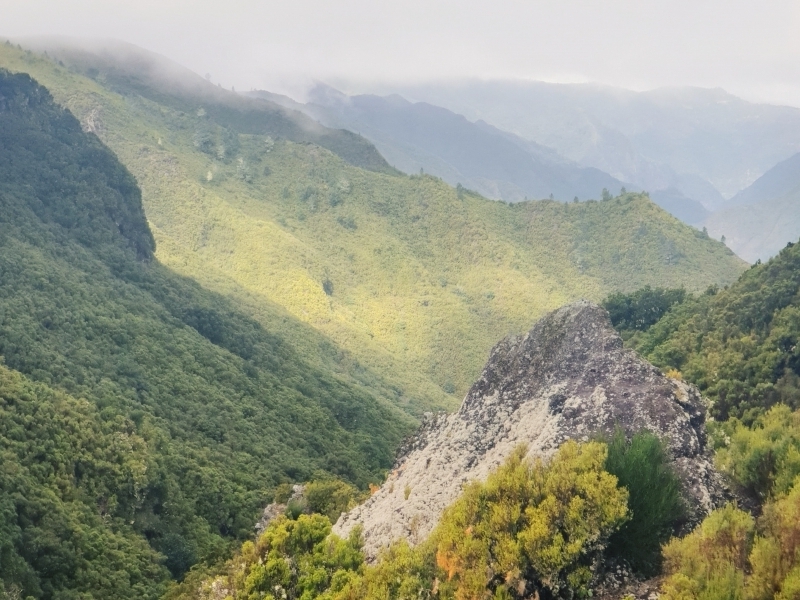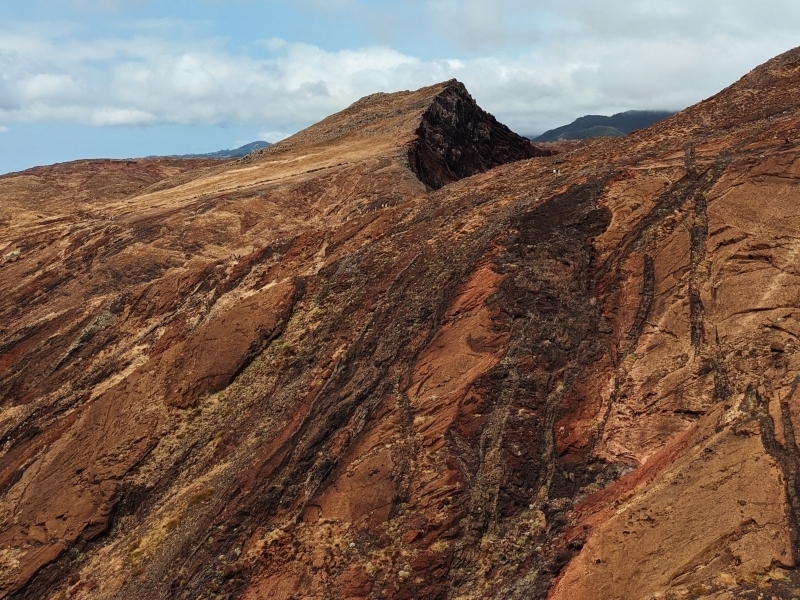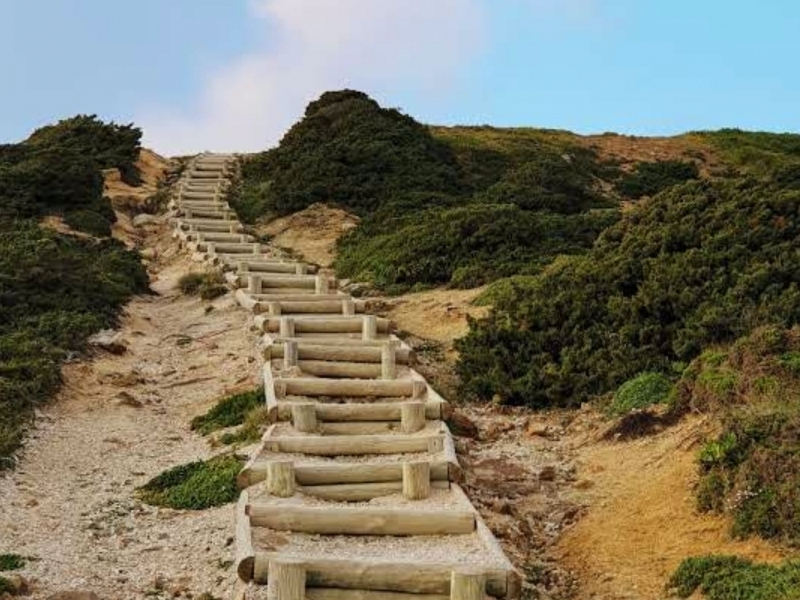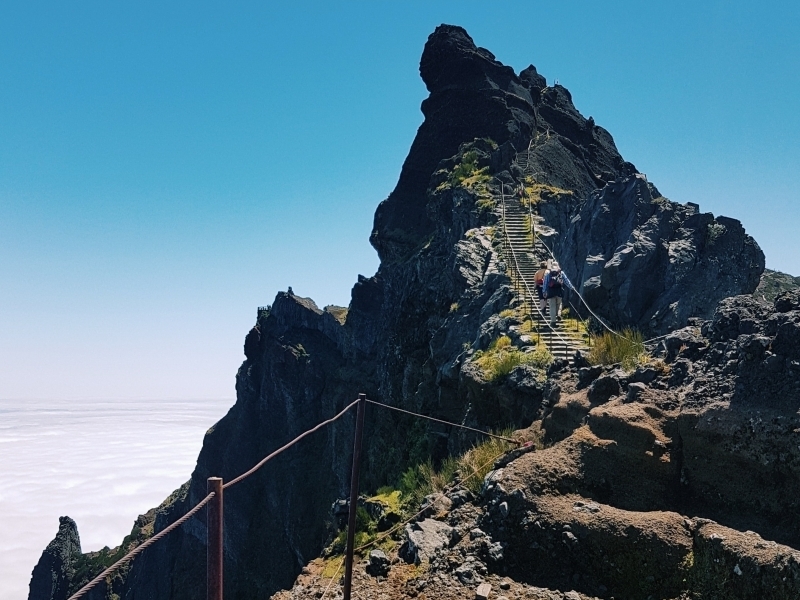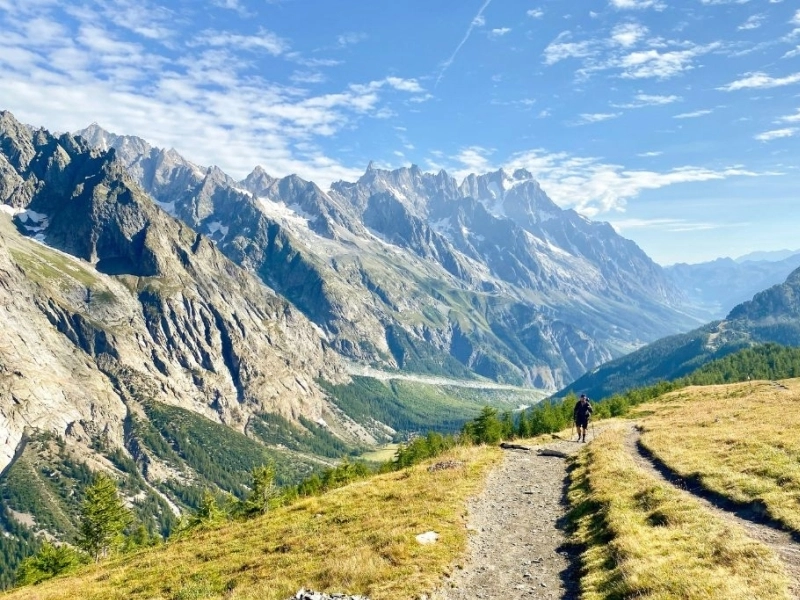News and Testimonials

Portugal's best hikes: 7 crowd-free routes to cherish
From coastal routes to hilltop climbs, Portugal has trails to suit every type of hiker
Famed for golden beaches and picturesque cities, Portugal is less known for its hiking paths. This is good news for those looking to discover memorable trails far from the madding crowd.
The Iberian nation is packed with countless scenic routes, from clifftop journeys overlooking the crashing waves to craggy mountain trails in well-preserved parks and nature preserves. Hiking here is not only about enjoying panoramic views and spotting wildlife, stepping onto the trail can also take you back in time to traditional stone villages and along ancient routes once used by the Romans.
In general, the best time to hike is in the spring and fall, although if you’re heading to the south, the winter doesn’t disappoint: you’ll have cool, but mostly pleasant days and enjoy a welcome lack of crowds wherever you go. Here’s a rundown of some of Portugal’s best hikes.
Via Algarviana
Best long-distance hike in the southern interior
186 miles (300km), 2–3 weeks, moderate
If you’ve had enough of lounging on one of the Algarve’s postcard-pretty beaches, a hike along part – or, if you’re really brave, all – of the 186-mile Via Algarviana is the best way to appreciate the magnificent landscapes of this region. The trail stretches from Alcoutim in the northeast to the Cabo de São Vicente in the southwest. Some of the most beautiful sections are around Monchique, where splendid vistas open up as you climb through cork groves to the Algarve's highest peaks.
For a two-day taster of the trail, stay in Monchique, walk up to Picota and back one day, and up to Fóia and back the next. Avoid high summer, when temperatures can be extreme and wildfires can pose a hazard.
Seven Hanging Valleys Trail
Best walk along sea cliffs
5.7km (3.5 miles) one-way, 2-3 hours, moderate
The central coast of the Algarve is the starting point for one of the loveliest seaside walks in the Iberian peninsula. Multi-colored rock formations, the scent of the salt-tinged air, and the sound of crashing waves all set the stage for an immersive hike along coastal cliffs. The light is most impressive in the early morning or late in the day, but in truth, there’s no bad time to go. Even if you go in the heat of the day, you can cool off at beaches along the way (or wait until lovely Praia da Marinha at the end of the trail).
Don’t miss key photo opportunities, like the Alfanzina lighthouse or the wind-carved arches jutting into the ocean at Praia da Mesquita. The walk also passes over the Benagil Caves, but if you want to see the spectacular interior, head down to Praia de Benagil where you can arrange a boat trip.
Piódão to Foz d’Égua Loop
Best village-to-village walk
6.8km (4.2 miles), 2 hours, moderate
A trip to the tiny village of Piódão takes you deep into the Serra de Açor (Goshawk Mountains), a remote range of vertiginous ridges, deeply cut valleys, rivers, and virgin woodland. The village itself is extremely atmospheric, set among steeply terraced slopes with its grey schist houses clinging to the verdant hills, but it can get busy with tourists.
To escape the crowds, and enjoy the serenity of this magnificent region, take the short signposted trail to the nearby village of Foz d’Égua, home to some lovely old stone bridges, schist houses, and a precarious-looking footbridge over the river gorge. You can loop back on a different path with magnificent views over the verdant landscape.
Paiva Walkways
Best river walk
8.7km (5.4 miles) one-way, 3 hours, moderate
Hidden in northern Portugal’s Aveiro region is one of Portugal’s best inland walks. The Passadiços do Paiva take you along a series of staircases and walkways that cling to the hillsides overlooking the gurgling Paiva River. Enjoy beautiful views over a rugged valley and plenty of opportunities to cool off, with three river beaches along the way. At the journey’s end (or beginning), you can make an optional visit to Ponte 516 Arouca, the world’s longest pedestrian suspension bridge.
Preparation is essential for this walk. The walk happens in the Arouca Geopark, and you must have a (very reasonably priced) ticket to go on the walk. It’s easiest and cheapest to book this online. You’ll also need your own vehicle to reach the trailhead since there are no buses here as well as a firm idea of your itinerary. You can start in either Areinho or Espiunca, and take a taxi back to your starting point at the end. If you’re only planning to go one way, however, it’s less strenuous to begin in Areinho. If you’re planning to do a roundtrip hike then you should start in Espiunca and get the harder bits out of the way first.
Via Geira Roman Road
Best historical trail
4.3km (2.7 miles), 1-2 hours, easy
One of Parque Nacional da Peneda-Gerês' unforgettable hiking experiences is the Via Geira, an ancient Roman road that once stretched nearly 200 miles between Braga and Astorga (Spain), and now has World Heritage status. The most beautiful stretch begins at Portela de Homem, where Roman milepost XXXIV still stands.
From the milepost, you can walk southwest, following the Rio Homem downhill through the beautiful Mata de Albergaria forest. This entire stretch is littered with Roman trail markers – some inscribed with the name of the emperor during whose rule they were erected.
Rocha da Pena circuit
Best off-the-beaten-path hike
6.6km (4.1 miles) round-trip, 2-3 hours, moderate
The Serra do Caldeirão's most worthwhile short walk is climbing this limestone escarpment via a well-signposted circuit. The area has 450 different plant species, including native daffodils and bee orchids. Among the birdlife you might see are the short-toed snake-eagle, Iberian green woodpecker, and Egyptian vulture. Don’t miss the optional detour up to Talefe, the highest point in the Rocha da Pena at 479m (1571ft), with mesmerizing views over the Algarve’s hinterlands.
Museums in Salir, Alte, and Querença stock a basic map-guide. Carry water and snacks (the only refreshment stops are small shop-cafes at the base and in Pena village) and heed seasonal forest fire warnings. The Rocha da Pena is also popular with rock climbers.
Rota Vicentina
Best coastal walk in Portugal
226 to 263km (141 to 163 miles), 14 days each trail, moderate
The Rota Vicentina comprises two walking trails – one coastal and one inland – and runs along the southwest coast to Cabo de São Vincente. The coastal walk (better known as the Fishermen’s Trail) uses paths forged by beachgoers and fisherfolk and passes through some of Portugal’s most dramatic coastal scenery. The inland route (the Historical Way) is equally appealing, and passes through rural villages, cork-tree forests, and river valleys, with a scenic coastal section anchoring the southern end of the trail.
Both trails are made up of sections, and it’s rarely more than 25km (15.5 miles) between villages, where you can lodge for the night (thus no need to bring camping gear). The Fishermen’s Trail has 13 sections, totaling 227km (141 miles), and the walk is slightly more difficult with some passages on dunes and thigh-burning sands. At times it runs along the cliffs, mostly single track, and only walkers are allowed. The longer Historical Way has 13 sections totaling 263km (163 miles). Trails are wider and the walk is generally easier; mountain bikes are permitted.
source: lonelyplanet.com

